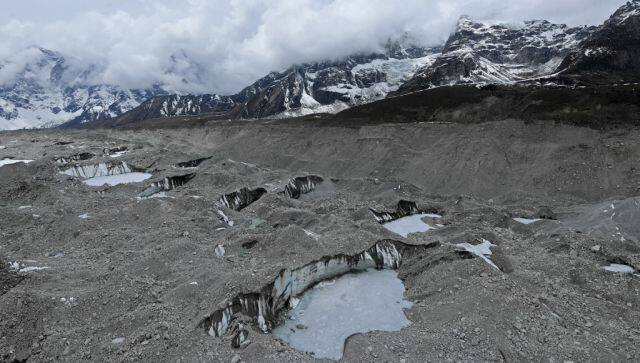Climate change is altering the earth in more ways than we can even imagine. Nepal is preparing to shift the Everest base camp from its original position. Global warming and human activity are making it unsafe. Used by 1,500 people in the spring climbing season, the base camp is situated on the Khumbu glacier which is rapidly thinning. Tara Nath Adhikari, director of Nepal’s Department of Tourism, told Sky News that human activity and carbon emissions were accelerating the melting of the ice. “We have to protect the ice and snow on the mountain,” he said. According to researchers, the melting ice of the Himalayas, which is a result of the climate crisis, is destabilising the glacier at the base camp. Where will be base camp be shifted? Everest, which is on the China and Nepal border, has two base camps. The south base camp on the Nepal side is more popular. It is currently located at an altitude of 5,364 m. However, it is likely to be shifted as much as 400 m lower, to a site where there is no year-round ice. The plans to change the location come after recommendations by a committee formed by the Nepal government to monitor mountaineering on Everest. According to Everest base camp manager Tshering Tenzing Sherpa, who works with the regional Sagarmatha Pollution Control Committee, the existing site would be fit for no more than another three or four years, reports the Independent. Nepal government officials told the BBC that the camp could be shifted by 2024. How bad is the situation? A 2018 study by researchers from the United Kingdon’s Leeds University showed that the segment close to base camp was thinning at a rate of 1m per year. According to regular climbers, pools of water have been seen on rocks as high as the South Col, a mountain pass, at 8000 m. Some have said that crevasses emerged under them while they were sleeping at the basecamp. Frequent noises caused by the crumbling of rocks in the camp area have been reported. The melting ice has created a brook which runs through the middle of the camp during the day but freezes at night. And it is getting bigger every year, according to a report in Nepali Times. Do more crowds make it worse? [caption id=“attachment_10806671” align=“alignnone” width=“640”]
 Frequent noises caused by the crumbling of rocks in the camp area have been reported. AFP[/caption] The basecamp draws more people every year and that too is a problem. Khimlal Gautam, a leading member of the Sagarmatha Pollution Control Committee, said that the presence of so many people at the base camp was contributing to the problem. “For instance, we found that people urinate around 4,000 litres at the base camp every day,” he told BBC. “And the massive amount of fuels like kerosene and gas we burn there for cooking and warming will definitely have impacts on the glacier’s ice.” Human waste and debris are also a concern, with climbers leaving behind empty oxygen cylinders, food packaging, and used rope. How will the shift affect climbers? Shifting the camp lower down the mountain would add to the length of the climb from base camp to camp one, the next staging post for those scaling Everest. A large majority of climbers ascend Everest from Nepal. However, the number of climbers starting from China is increasing. While the shifting of the basecamp is on the cards, it will only be finalised after discussing with local communities. “We have assessed the technical and environmental aspects of the base camp, but before we relocate it we will have to discuss this with local communities, considering other aspects like their culture,” Adhikari told BBC. With inputs from agencies
Frequent noises caused by the crumbling of rocks in the camp area have been reported. AFP[/caption] The basecamp draws more people every year and that too is a problem. Khimlal Gautam, a leading member of the Sagarmatha Pollution Control Committee, said that the presence of so many people at the base camp was contributing to the problem. “For instance, we found that people urinate around 4,000 litres at the base camp every day,” he told BBC. “And the massive amount of fuels like kerosene and gas we burn there for cooking and warming will definitely have impacts on the glacier’s ice.” Human waste and debris are also a concern, with climbers leaving behind empty oxygen cylinders, food packaging, and used rope. How will the shift affect climbers? Shifting the camp lower down the mountain would add to the length of the climb from base camp to camp one, the next staging post for those scaling Everest. A large majority of climbers ascend Everest from Nepal. However, the number of climbers starting from China is increasing. While the shifting of the basecamp is on the cards, it will only be finalised after discussing with local communities. “We have assessed the technical and environmental aspects of the base camp, but before we relocate it we will have to discuss this with local communities, considering other aspects like their culture,” Adhikari told BBC. With inputs from agencies
Nepal to move Everest base camp. Here’s why
FP Explainers
• June 17, 2022, 18:09:29 IST
The Everest base camp is becoming unsafe because of climate change. The camp is situated on the Khumbu glacier, which is thinning at a fast pace
Advertisement
)
End of Article